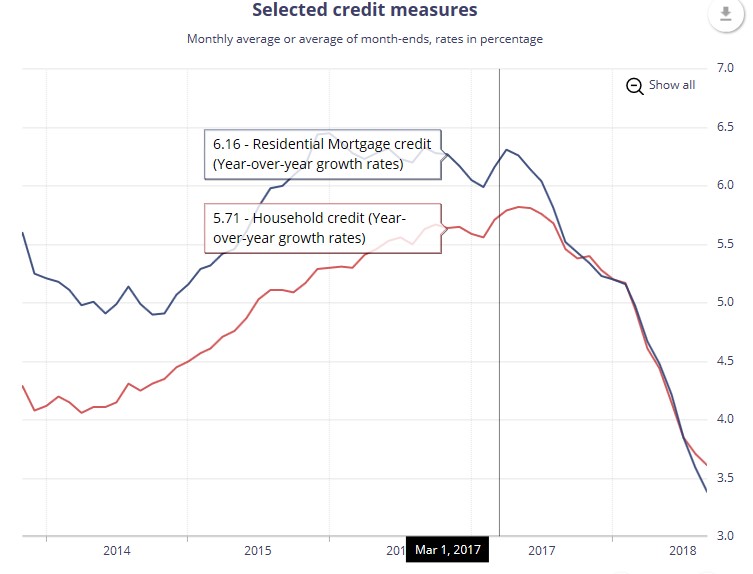Canada introduced a set of tougher mortgage qualification rules in late 2017 that are now changing the landscape for prospective home purchasers. Increasingly, borrowers rejected by the commercial banks are turning to the non-bank or alternative lenders to finance their purchases. The Bank of Canada made it abundantly clear that household credit, mortgages plus consumer credit, was growing too fast. By mid-2016 consumer credit was growing at 5.7% annually and total residential mortgages were growing at 6.2%. In particular, the red-hot housing industry was fuelling the mortgage market and the Bank felt compelled to tame its growth by introducing more stringent borrowing requirements.

Source: Bank of Canada
The Bank introduced a series of “stress test” requirements that were designed to prove that the borrowers could continue to meet payments even if interest rates were as much as 200bps higher than the rates actually negotiated with their banks.
For thousands of prospective borrowers, these new rules virtually shut them out of the housing market. As a consequence, the growth in mortgage lending dramatically shifted downwards to around half the rate experienced prior to the introduction of the new rules. Re-inforcing this downward trend is the decision by the major banks to cut back on mortgage lending overall. The Bank of Canada in recent statements has welcomed this moderation in consumer lending, arguing that it represents a more stable environment going forward.
However, the rules have given a huge boost to private lenders who are not subject to these regulations. A recent study showed that homeowners are using private funding to increase the size of their mortgages and take advantage of the recent surge in home equity in the Greater Toronto Area (GTA) . In the second quarter of 2018, 20% of mortgage lending came from private sources in the GTA, a 67% increase from the same quarter in 2016.[1] Although the commercial banks continue to account for over three-quarters of all residential mortgages, they are losing market share to the private sector. Private lenders look more to the loan-to-value than to borrower’spay stubs when considering an application. And, in the case of GTA, home values continue to increase, especially in the core area as supply remains very tight. The report reveals that private lenders now occupy 10 %or C$ 1.6 billion of the mortgage market in the GTA.












Leave A Comment